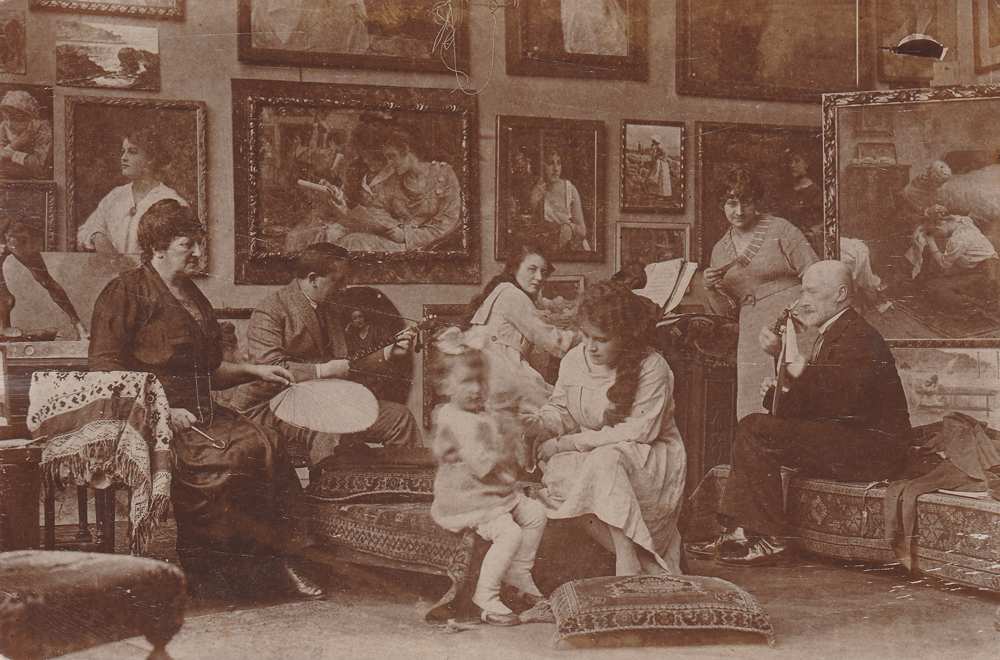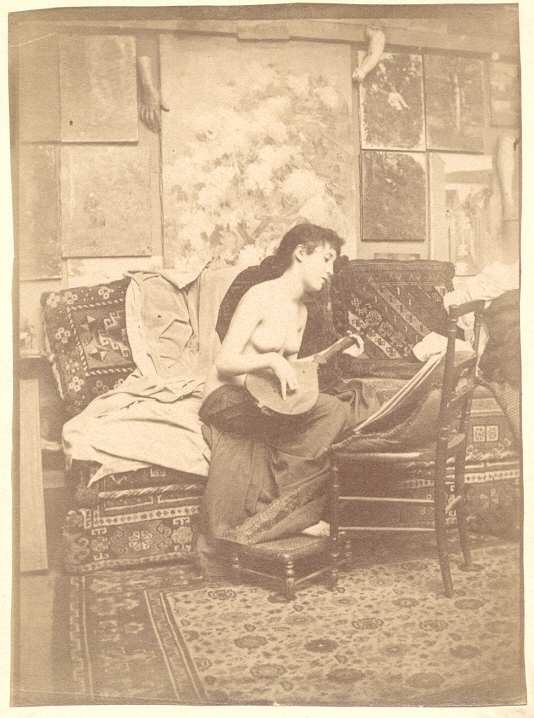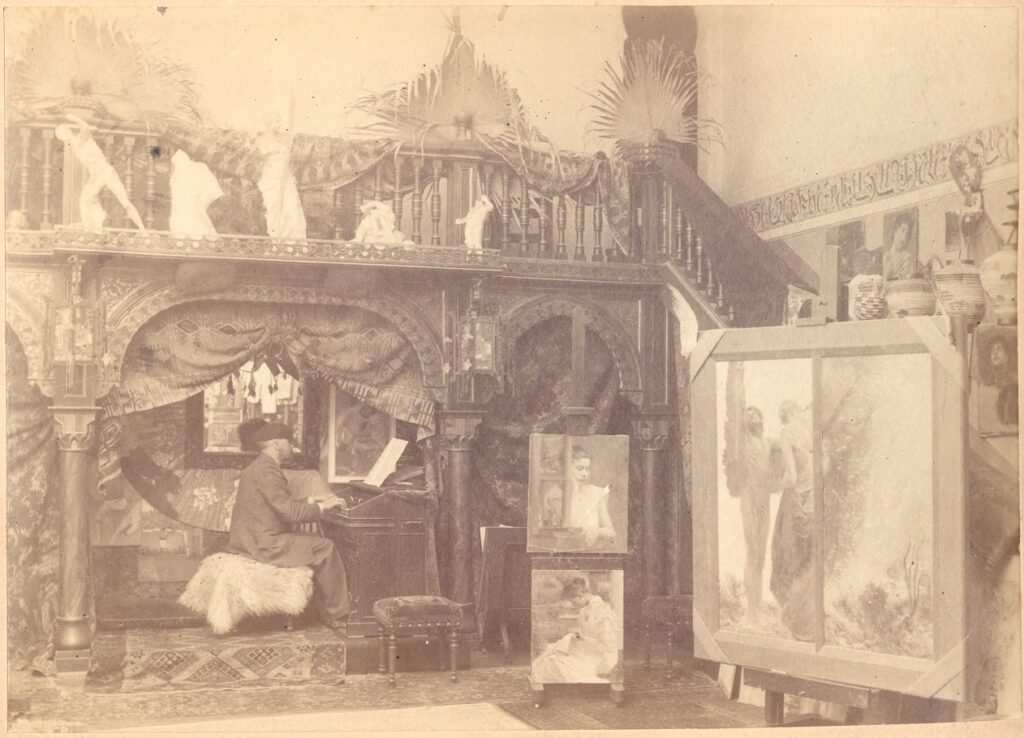It is interesting how in almost every photograph taken in one of Bukovac’s studios, among the multitude of paintings, furniture and various decorative objects, we almost always find a musical instrument. It’s not so strange if we take into account the words that Bukovac’s daughter Ivanka wrote in her notes entitled Memories of my father:
Apart from painting, father loved music the most, which he understood as a real artist. He did not have the opportunity to study any instrument, but as a self-taught player he played the tamburica (long-necked lute), also the harmonium and played the piano a little. During his stay in Cavtat, he participated in the tamburica choir of the “Epidaurus” society, as well as earlier in Zagreb in the art society.
Photographs of the model in Bukovac’s Paris atelier (around 1888) show a young woman holding a fiddle. Vlaho Bukovac, according to the fashion of the time and his interest in the culture of the East and the Orient, brought an instrument from this area to his Parisian studio, which would serve as a template for him to paint on some of his artistic compositions. In addition to these prop instruments, such as the fiddle, or tambourine that we find in many of Bukovac’s works, we also see instruments in paintings and photographs, some of which are still part of the museum collection in Bukovac House. These are the personal instruments of Vlaho Bukovac which he played himself.
In this respect, the time Bukovac spent in Zagreb (1893-1898) is extremely interesting. In the photographs from the newly built Zagreb studio, in which he brings the spirit of the Parisian space, we see him playing harmonium and brač(variation of tamburica / bas-prim), instruments from which he will not be separated throughout his life. Bukovac also played brač in the tamburica orchestra, and in his native Cavtat he participated in the founding of one such orchestra. The brač, which we see in photographs from the Zagreb and Prague studios, but also in several paintings, was purchased by Bukovac in Zagreb, and was made by tamburica builder Terezija Kovačić, whose factory was located at Ilica 47 from 1894.
It is the painting Carnival in Epidaurus that best conveys Bukovac’s love for music. Commenting on this painting, painted in 1901, during the four-year period that Bukovac spent in his native Cavtat, Bukovac says: This painting represents how the Epidaurus society is having fun. Everyone is masquerading, the tamburica choir plays a dance piece and Ljubo Medini, who was our leader – is in control. The choir consists of 16 people, including me.
It is Bukovac who will be engaged in equipping this orchestra. The berda (tamburabőgő), played by Niko Franičević in the picture, is also kept in the collection of Bukovac House. Bukovac painted himself from behind playing a brač from which we see only the neck of the instrument and a recognizable twisted tricolor ribbon with pompoms. Among other instruments, Bukovac played harmonium and guitar. Today, two harmoniums are kept in the Bukovac House. It was a very popular instrument in the second half of the 19th century. In addition to being used in churches as an accompaniment to the liturgy, it was often played for entertainment in private homes.
In addition to all the above mentioned instruments, the Bukovac family also had a piano, since their daughter Marija studied music at the Prague Conservatory. At home we always had many guests – our students, mainly from the Academy, father’s students and friends. Our house was hospitable and everyone was happy to meet my father. – Ivanka Bukovac remembers joyful Prague moments. These gatherings often ended with music, as evidenced by numerous family photographs and correspondence.
We learn from a letter sent by his wife Jelica to her family friend Flora Jakšić on April 14, 1913, what, among other things, was played in Bukovac’s home: Only once since you left was there a little company with us because we were surprised by a young doctor and his sister, we played, sang… Chopin was also played, that extraordinary artist whose sound and melancholic and upset compositions vibrate deep in the soul; poor soul, he was also unhappy so this is felt in all his plays; so I can’t help but find an echo in the listener whose condition suits him.




